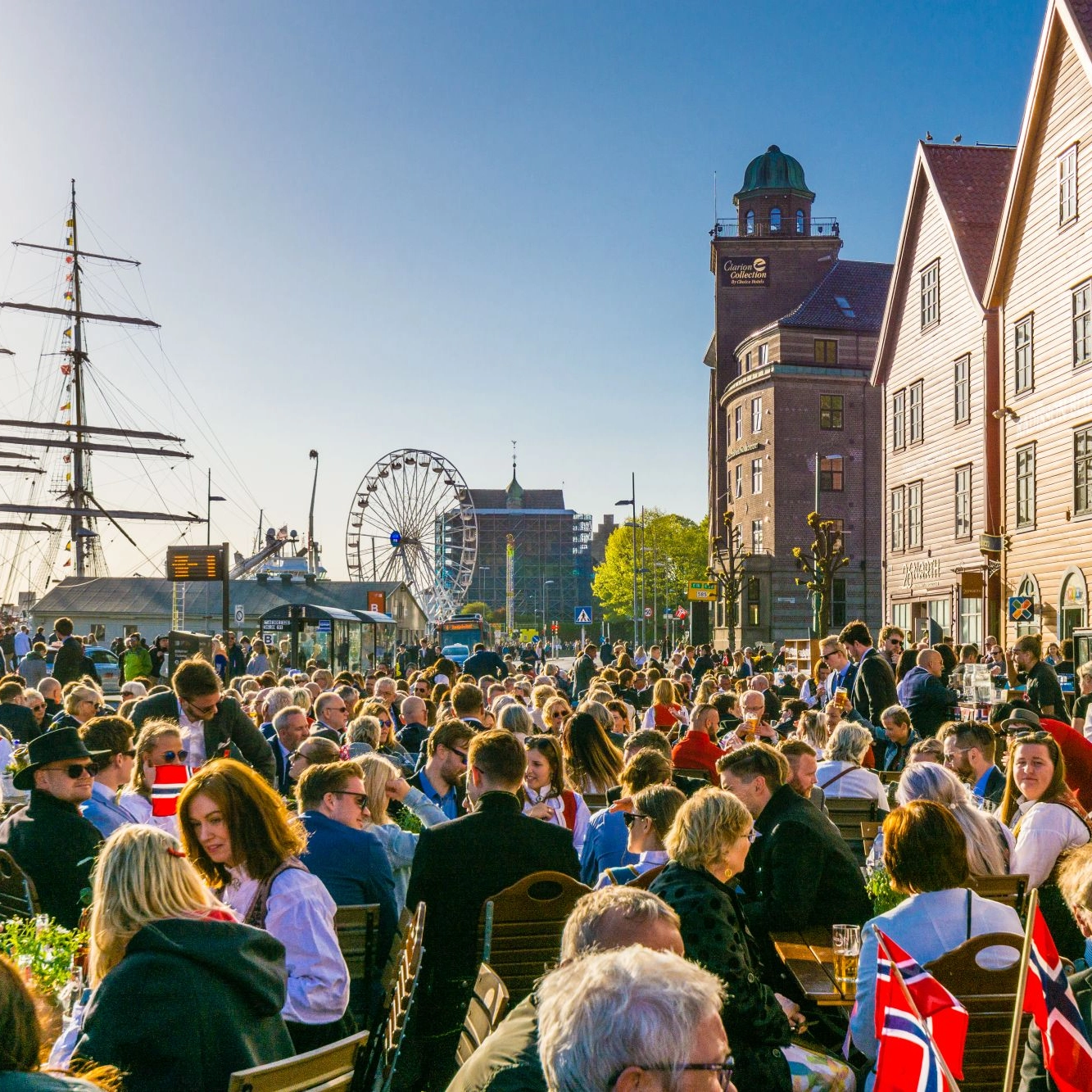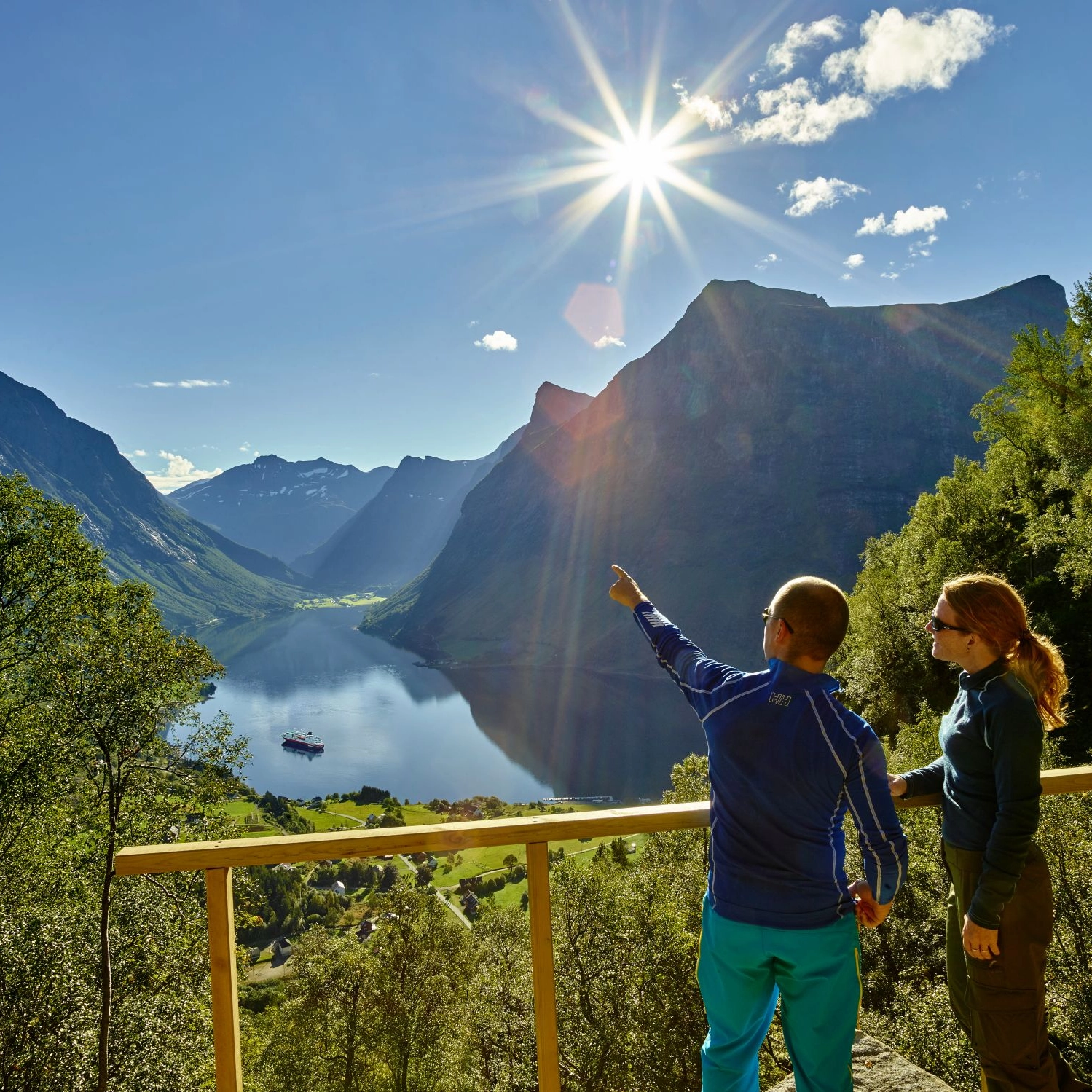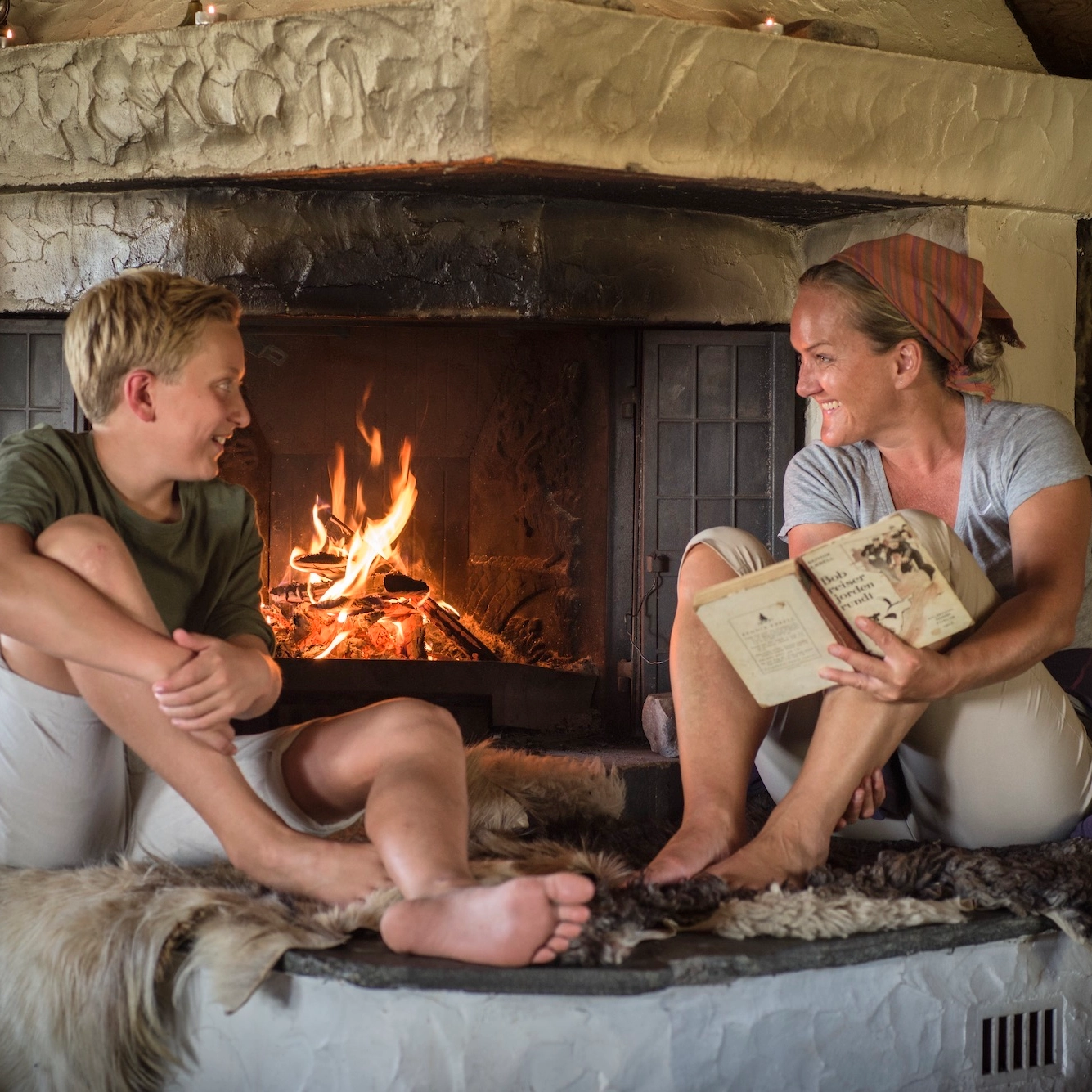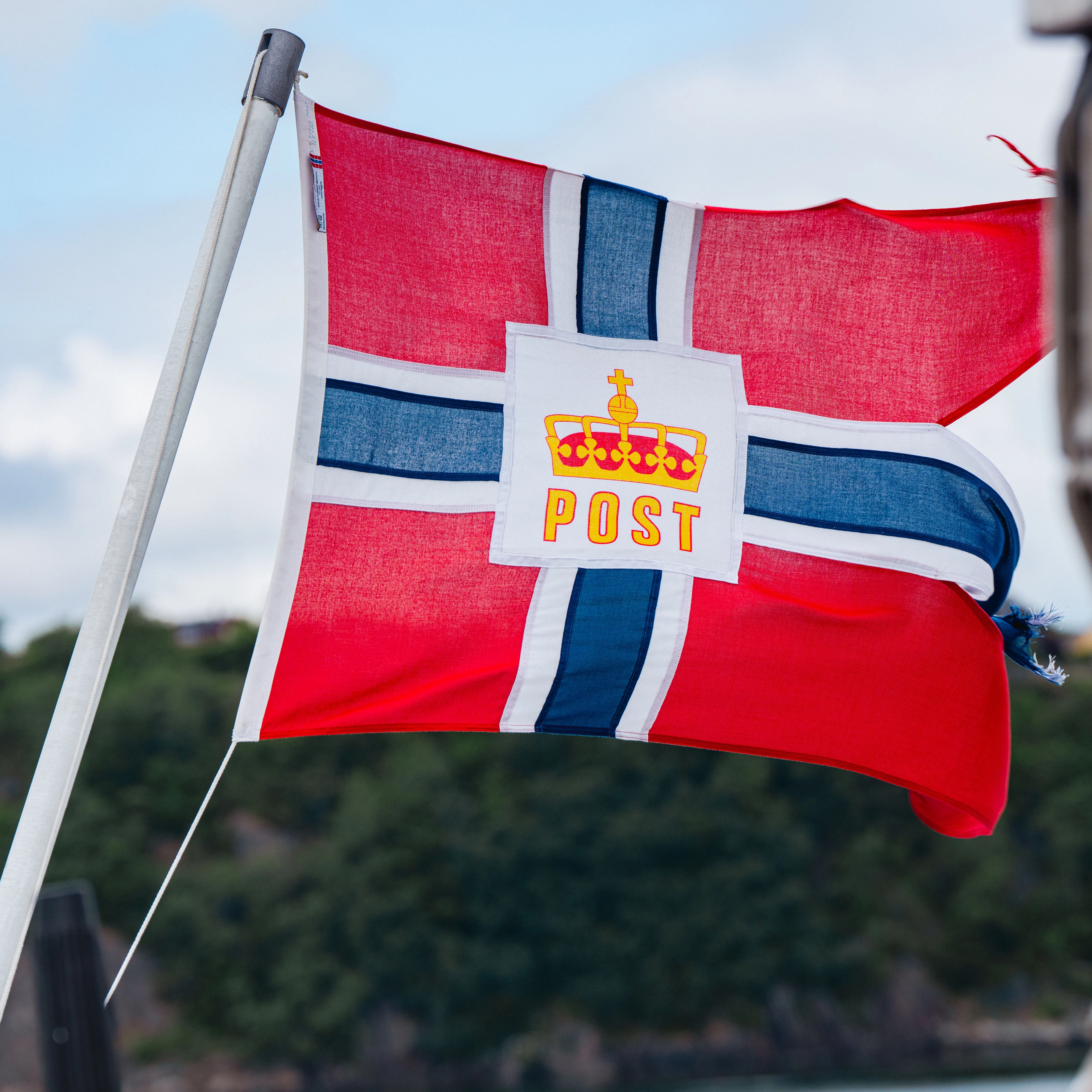A Brief History of Norway
From ice age to modern age, Norway has gone through tumultuous times to become the country it is today. The Viking era, unions, wars and independence has shaped Norwegian society and people through thousands of years. Getting to know the complete history of Norway is an arduous task, so check out this Brief History of Norway.

Early History
Norway and it's neighboring countries have been covered in ice several times, but the last ice melted about 14000 years ago. After the ice melted, people from the South and North-East started migrating to Norway as the coastline offered good conditions for sealing, fishing and hunting. The first traces of farming and the start of the Neolithic period began about 4000 BC around the Oslofjord.
During the Nordic Bronze age (1800 – 500 BC) innovations in technology and farming better equipped Norwegians to grow crops and trade furs and skins. A climate shift at around 500 BC lowered the temperature and the forests started to mainly consist of birch, pine and spruce.
During the Nordic Iron Age (55 BC – 800 AD) new social structures evolved, such as clans. Conflicts would be decided at a thing, a sacred place where punishments for crimes and other political issues would be discussed. Cultural influences from The Roman Empire started in the first century AD and Norwegians adapted letters and created their own alphabet called runes. Norwegians started trading with romans, while powerful and wealthy farmers functioned as chieftains and ruled areas of several settlements and tribes.
This was a rather quick summary of Norway’s early history, let’s go on to something a bit more exciting….

The Viking Age
The Viking Age is generally considered to have lasted from 793 – 1066 AD. Throughout this period Scandinavians and Vikings expanded through trade, colonization and raids. The first “proper” raid was against Lindisfarne in 793 and is considered the beginning of the Viking Age.
The Vikings were great ship-builders and their ships had exceptional qualities compared to other ships of the time. The Vikings were also excellent navigators which enabled them to spread all over Europe and even to North America! Did you know that the Viking Leif Eriksson reached the American continent 500 years earlier than Christopher Columbus?
The Vikings were also well equipped, well trained and fearless fighters. They believed that by being killed in combat they would end up in Vallhall, and therefore had no fear when it came to battle. The Vikings also brought slaves back from their raids, ensuring that a workforce tended to the farms while the Vikings went plundering.
Alas, every “good” thing must come to an end. After hundreds of years with Viking plunderings and raids, the Viking Age ended in 1066 at the Battle of Stamford Bridge.
Middle Ages
From 1000 – 1300 the population of Norway increased from about 150.000 to 400.000. This period was characterized by land ownership by the king, church or the aristocracy. There were several wars in this period mainly about unclear succession laws. These wars ended in 1217 when Håkon Håkonsson was appointed king and clear laws of succession were introduced.
In Norway, as elsewhere in the world, the middle ages brought with it a rapidly increasing population, social and political changes, rural exodus and urbanization. The Black Death, also known as the Great Plague, put an end to this in 1349 killing of more than 50% of the population in Norway.
Unions
In the 14th Century Norway entered into a union with our neighbors in the south, Denmark. Political power was lost and “outsourced” and trade and commerce was was taken over by the Hanseatic League. For about 200 years the Hanseatic League controlled distribution of fish from Bergen to the Baltic area, Norway’s main export and income at the time.
Copenhagen (in Denmark) became the capital and the kingdom was named “Denmark-Norway”. The union was not exactly popular in Norway as Danish became the official language and government was moved abroad. Although the economy was growing and the population increasing, the fight for independence within the union was confirmed by establishing the University in Oslo in 1811.
The year 1814 is in many ways one of the most important years in Norway’s history. Norway was after the Napoleonic wars handed over to Sweden, and was now suddenly in union with their neighbors to the east. Norwegians longed for independence and a constitutional law was formed and signed at Eidsvoll on the 17th of May, 1814. By signing the Constitution Norway rejected a new absolute monarchy from abroad. Power would now be split between the king and the Parliament of Norway.
Independence and wars
The union with Sweden ended in 1905 as a result of a popular referendum. The parliament was divided in two and the Royal Palace and parliament building (Storting) was built. Today, these two buildings form the “heart” of the city centre in Oslo.
Norway declared itself neutral in both the First and Second World War. After being invaded by Germany in 1940, Norwegians showed strong national resistance towards the occupying force and with the help of allies, Norway was liberated in May 1945.
After the war Norway accepted the Marshall Plan and the country was rebuilt within a couple of years. Norway also became a member of NATO in 1952. Norwegians have always had a strong belief in being independent. This is probably one of the reasons why Norwegians have rejected the European Union in two popular referendums in 1972 and 1994.

Norway Today
Crude oil was discovered on Norway’s continental shelf in 1969 and this has undoubtably had a major impact the economy and life standards in Norway. The petroleum industry is essential to Norway's economy and the Norwegian oil company Equinor (formerly Statoil) is among the 50 biggest companies in the world, bigger than Nestlé, BMW and Boeing.
The Oil Fund (Oljefondet) was established in 1990 with the aim to ensure responsible and long-term management of revenue from Norway’s oil and gas resources. The Oil Fund, or the Government Pension Fund Global, aims to benefit both current and future generations and it is one of the largest funds in the world.
Norway is a good place to live and frequently on top of lists for best living standards, happiest people and so on. Norwegians are famed for being tolerant with a dry sense of humor, as well as having a strong sense of community.
Get to know the Norwegians
The typical Norwegian cherishes nature and embraces the great outdoors. Minimalist in design and lifestyle, they prioritize practicality. Norwegians honor heritage and folklore, fostering a vibrant, inclusive society that blends tradition with a modern, open-minded outlook while embracing sustainability.

Traditional Norwegian food
Norway has a lot of interesting traditional food, and any travelers visiting Norway would do well to sample some of the local cuisines. Culinary traditions in Norway have been dominated by meat, fish, and seafood that could be hunted or caught. These days the Norwegian food space represents an interesting mix of old and new due to culinary influences from all over the world.

Why Norway Is Perfect for Adventure Travelers
Norway is often referred to as a dream destination for adventure travelers. The varied Norwegian landscapes provide adventurers with a rich diversity of outdoor activities to choose from throughout the year, including hiking, biking, skiing, kayaking, and rock climbing, to name a few. There's no shortage of thrilling experiences to be had in Norway's great outdoors!

The 17th of May – Norway’s National Day
The 17th of May is Norway’s national day, and what a party it is! Though many countries mark their national day with military parades, Norway’s celebration is lighthearted and fun, with a special focus on kids enjoying this special day. In this article, we’ll tell you all about Norway’s Constitution Day, how it began, and how it’s celebrated across Norway today.

Why a Scanditour is the New Eurotour
Done the whole Eurotrip thing? Looking for some fresh insight into where your next travel adventure should be? Head over to Scandinavia, and Norway in particular.

What is ‘slow travel’ and why Norway ticks all the boxes
Have you ever felt more exhausted after a trip than before you left? Then you have probably done the exact opposite of slow travel! When slow traveling, there is no need for a vacation after your vacation.It is not about "likes" that generate hotspots on Instagram and overwhelmingly long bucket lists.

How to stay warm and koselig this winter
Anyone who has ever taken a trip to Norway during the winter season knows just how vicious the Norwegian winters have the potential to be. This is especially true for Northern Norway where you can find really cold temperatures. So how do Norwegians tolerate the cold and long winter? With the “philophy of koselig” of course.

Learn Norwegian words and phrases before your trip
If you’re planning a trip to Norway, you might be interested in learning a few Norwegian words and phrases. It can be really helpful to have some handy phrases up your sleeve for communicating with locals during your upcoming trip to Norway, so we’ve prepared a great guide that will help you learn the lingo before you arrive!

Sustainable travel in Norway
These days, more and more travellers are focused on sustainable travel. People want to experience their dream destinations while minimizing the negative impact on the local environment and community. Fortunately, Norway is one of the most sustainable countries in the world, and plenty of measures have been taken to ensure that travellers can enjoy an eco-friendly Norwegian holiday.

Traditional Norwegian food
Norway has a lot of interesting traditional food, and any travelers visiting Norway would do well to sample some of the local cuisines. Culinary traditions in Norway have been dominated by meat, fish, and seafood that could be hunted or caught. These days the Norwegian food space represents an interesting mix of old and new due to culinary influences from all over the world.

Why Norway Is Perfect for Adventure Travelers
Norway is often referred to as a dream destination for adventure travelers. The varied Norwegian landscapes provide adventurers with a rich diversity of outdoor activities to choose from throughout the year, including hiking, biking, skiing, kayaking, and rock climbing, to name a few. There's no shortage of thrilling experiences to be had in Norway's great outdoors!

The 17th of May – Norway’s National Day
The 17th of May is Norway’s national day, and what a party it is! Though many countries mark their national day with military parades, Norway’s celebration is lighthearted and fun, with a special focus on kids enjoying this special day. In this article, we’ll tell you all about Norway’s Constitution Day, how it began, and how it’s celebrated across Norway today.

Why a Scanditour is the New Eurotour
Done the whole Eurotrip thing? Looking for some fresh insight into where your next travel adventure should be? Head over to Scandinavia, and Norway in particular.

What is ‘slow travel’ and why Norway ticks all the boxes
Have you ever felt more exhausted after a trip than before you left? Then you have probably done the exact opposite of slow travel! When slow traveling, there is no need for a vacation after your vacation.It is not about "likes" that generate hotspots on Instagram and overwhelmingly long bucket lists.

How to stay warm and koselig this winter
Anyone who has ever taken a trip to Norway during the winter season knows just how vicious the Norwegian winters have the potential to be. This is especially true for Northern Norway where you can find really cold temperatures. So how do Norwegians tolerate the cold and long winter? With the “philophy of koselig” of course.

Learn Norwegian words and phrases before your trip
If you’re planning a trip to Norway, you might be interested in learning a few Norwegian words and phrases. It can be really helpful to have some handy phrases up your sleeve for communicating with locals during your upcoming trip to Norway, so we’ve prepared a great guide that will help you learn the lingo before you arrive!

Sustainable travel in Norway
These days, more and more travellers are focused on sustainable travel. People want to experience their dream destinations while minimizing the negative impact on the local environment and community. Fortunately, Norway is one of the most sustainable countries in the world, and plenty of measures have been taken to ensure that travellers can enjoy an eco-friendly Norwegian holiday.